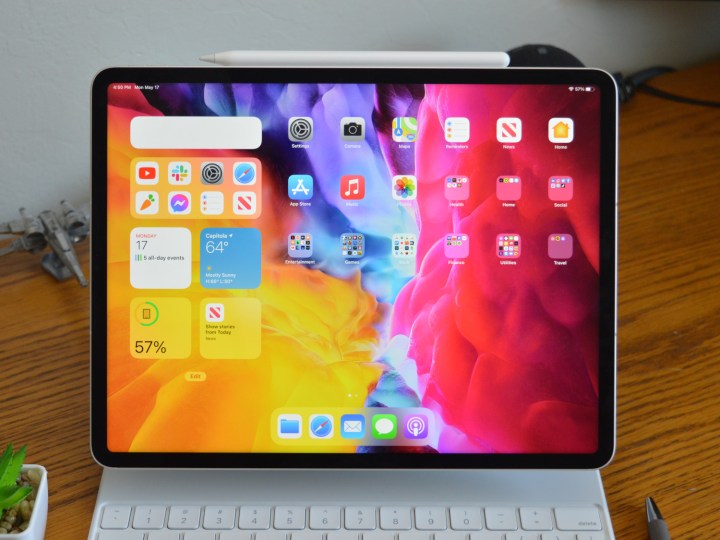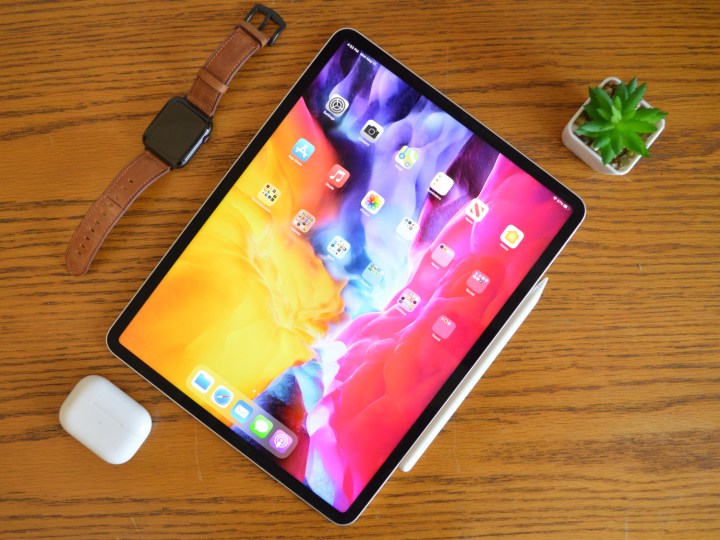Apple is blurring the line between the iPad and the Mac. With the company’s messaging around higher-end iPad models referring to them as laptop replacements and the new iPad actually including the same chip as new Macs, there’s no denying that it’s harder than ever to decide which one to go for.
Despite the similar processing power, Macs are still generally more capable than iPads, thanks largely to the desktop-class operating system — MacOS. But they’re not better for everything. In fact, there are plenty of things that the iPad Pro is better at than the Mac.
Video chatting
Apple seems to regularly forget about the video-chatting camera experience on the Mac lineup, but it regularly pushes updates to iOS and iPadOS devices — like the AR-powered Eye Contact feature that it launched in 2019 and the new Center Stage feature that’s available in the new iPad Pro. Center Stage actually works really well, leveraging the wide view of the front-facing ultrawide camera to zoom in on your face and pan around as you move.
Of course, the iPad Pro’s video-chatting experience isn’t perfect. The main drawback is that, in landscape orientation, the camera sensor is on the side, which can look a little awkward. But you’ll look awkward in much better quality than on a Mac.
An incredible display

The display quality on the MacBook Air and MacBook Pro is solid, but it’s not amazing. It is amazing on the iPad Pro, though — especially the 12.9-inch model. The 2021 12.9-inch iPad Pro offers Apple’s Liquid Retina XDR display, which leverages mini-LED technology to display deeper black levels and excellent brightness, especially when viewing HDR content. There’s a clear difference between the 12.9-inch iPad Pro and other iPad models, and that can really help for those who want something for graphic design or even just watching movies. And that’s not to mention the fact that all recent iPad Pro models offer a 120Hz refresh rate, making for smooth animations and an incredibly responsive feel.
Better security
Recent MacBook models have Touch ID, which, to be fair, is pretty convenient. But what’s more convenient than having to reach out and place your finger on a sensor? Simply having the right face. The iPad Pro has Face ID, meaning that all you have to do is look at your iPad to unlock it, autofill passwords, and so on.
Again, the Face ID experience on the iPad Pro isn’t perfect. The main downside is that it can be pretty easy to accidentally cover up the Face ID sensor when you’re holding the iPad horizontally. But you’ll get used to not doing so eventually.
Touch

At the risk of beating a dead horse, one reason the iPad Pro is better than a MacBook is that it supports touch. That helps make the device a whole lot more interactive and natural-feeling. We’re not really expecting Apple to release a touch-capable Mac any time soon, but as the line between the iPad and the Mac blurs, iPads may start feeling more like Mac computers anyway.
Versatility

Perhaps the single best reason to buy an iPad Pro over a MacBook is its versatility. Now, the different devices are more versatile in different ways. Obviously, MacOS, which is a full-fledged desktop operating system, is more versatile than iPadOS. But the iPad is still a more versatile device all around. You can use it simply as a touch device, or you can use it with a keyboard and mouse to get some work done. At this point, with the right accessories, it’s essentially a detachable 2-in-1.
Editors' Recommendations
- Apple is about to do the unthinkable to its iPads
- Apple accidentally revealed a big iPad Pro display upgrade
- Apple’s new iPad Pro and iPad Air just got delayed
- You may have to wait a while longer for new iPads
- UPS worker accused of nabbing $1.3M worth of iPhones and other Apple gear


